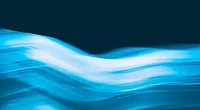Potential Applications of N-Halamines in Food Production, Processing and Packaging for Improving Food Safety

Foodborne illnesses have become an enormous burden to both public health officials and the food industry. Each year, some 9 million people get sick, 50,000 are hospitalized and 2,300 die of 15 foodborne diseases in the United States. Among these, microbial-related contamination is the biggest concern. Meanwhile, microbial contamination-related food product recalls are increasing, causing enormous economic losses to the food industry, totaling an estimated $15.6 billion.[1] For example, several food products have been recalled recently because the presence of Listeria monocytogenes and Salmonella was detected. All these reasons together mean the food industry must reexamine current antimicrobial strategies.
Most microbial-related foodborne illness outbreaks or food product recalls are caused by cross-contamination from food contact surfaces. Contamination may occur at any stage during production or postharvest processing. Microorganisms can attach and survive on food surfaces because of poor equipment design, improper handling or insufficient sanitation. Moreover, some pathogens can accumulate on contact surface materials and form biofilms, which are even more difficult to remove by established sanitation methods. This creates additional risk to food manufacturers.
Yet another concern is that more and more consumers prefer fresh and ready-to-eat food products for their convenience and nutritional value, especially in recent years. There is no further microbial killing process applied before consuming fresh and ready-to-eat foods, creating even more challenges as the food industry strives to ensure food safety.
Current Antimicrobial Strategies
Food microbiology research continues to respond to the increasing challenges posed by microbial contamination. It has been widely accepted that no single technology can solve all microbial contamination problems. Therefore, the food industry embraces all available techniques to control food microbial contamination, a strategy known as “hurdle” technology. Another trend is a move away from microbial killing toward prevention. No matter what the strategy, making sure all materials that come into contact with food are “clean” is important to reducing microbial cross-contamination.
Sanitation is one of the most important strategies for keeping food contact surfaces clean, but consumers are becoming more concerned about the safety of currently available disinfectants. Some disinfectants may also affect qualities such as food odor, color and taste. Since food-grade disinfectants are subject to concerns about safety and are strictly regulated, the development of new disinfection agents has progressed very slowly in recent years. At the same time, increasing numbers of microorganisms, including pathogenic bacteria, have been reported to develop resistance to some disinfectants currently in use.
Additionally, sanitation depends heavily on human involvement, and human error will never be eliminated. If errors are not found in time, the results can be serious. For all these reasons, finding novel antimicrobials or imbuing the food contact material itself with antimicrobial activity is important to enhancing the safety of food products.
At present, the most popular way to incorporate antimicrobial properties into food contact surfaces is by compounding antimicrobial additives such as triclosan and metal ions (copper, silver, etc.) into the materials.[2] However, since the antimicrobial effectiveness of these additives depends on their migration to contact surfaces, these techniques have several drawbacks, including insufficient effectiveness, reaction with food components, diminished antimicrobial activity over time, high cost, etc. Nanotechnology also offers possibilities and has been a hot research topic in the last few years, but controversy about such applications’ safety, as well as their high cost, has limited their success.
N-Halamine Technology
Until now, very few antimicrobial materials for surface treatment have been available for food processing applications, so there is a continuing need to introduce novel antimicrobial technologies to solve microbial cross-contamination problems. N-halamines, a group of compounds containing one or more nitrogen-halogen covalent bonds normally formed by the halogenation of imide, amide or amine groups, exert biocidal activity because of the oxidation state of halide atoms in chloramine or bromamine groups. N-halamines have attracted a great deal of interest of late because of their superior efficacy against a broad spectrum of microorganisms, their lack of toxicity to humans, their stability and their lower cost.[3]
Another feature that differentiates N-halamines from other biocides is that antimicrobial activity can be regained by treating the food contact surface with a sodium hypochlorite solution (bleach) after food has been processed or consumed. A recent review by Dr. Julie Goddard’s group at the University of Massachusetts highlighted the potential of N-halamines as organic antimicrobial coatings for food processing equipment.[4]
Previously, research by collaborators of our group focused on the application of N-halamine technology in textiles, biomedical materials and water treatment materials.[5,6] Food safety should rely on prevention, however, and intervention strategies need to be applied from farm to fork. We believe N-halamines can be useful for applications in all stages of food production, from processing through packaging.
N-halamines have both monomers and polymers, and both have great potential in the food industry, either as sanitizers or as a way to give food contact surfaces antimicrobial properties. The monomers can be applied as novel sanitizers. Dr. S.D. Worley’s group here at Auburn University has been working to synthesize novel N-halamine monomers.[7] Among these, one (MC) shows the most potential to be developed as a novel disinfectant because of its optimized antimicrobial activity, stability, low cost and safety.[8]
Use of these N-halamine compounds for food contact surface applications has seldom been explored before, however, although N-halamine polymers have been shown to provide very good antimicrobial activity as a coating for textiles, films and beads. Some N-halamine polymers have demonstrated total kill of 6-log-inoculated pathogenic bacteria within minutes and even seconds of contact. Polymers can also be used as coatings for various food contact materials, providing antimicrobial activity.
Food Production
In recent years, more and more food industry professionals have recognized the important role they play in preventing microbial contamination during food production. The Food Safety Modernization Act mandates application of prevention strategies during all stages of food production, and, thus, novel yet safe, effective and cheap antimicrobial technologies or materials need to be developed. N-halamines may be useful for a range of applications during food production, from treating fresh produce in the field to managing poultry production in the broiler house.
One potential application is as a novel sanitizer for food contact surfaces used during production. Although a great deal of research has shown the benefit of ensuring the cleanliness of food contact surfaces, this goal is elusive. Effectiveness in different food processing environments, good resistance to heavy soil or organic material load, low cost and long-lasting antimicrobial activity are desired in sanitizers. In our previous research, one of the N-halamine monomers, MC, came close to fulfilling all these requirements. In one experiment, MC was used to treat alfalfa seed and was effective at reducing the pathogen load without damaging the germination rate.
Another potential use for N-halamines is in poultry production houses. For example, an N-halamine monomer can be applied as an antimicrobial to keep the environment more sanitary. One of our experiments showed that MC effectively reduced Salmonella and Campylobacter in chicken litter and on various contact materials in a chicken house.[9] N-halamines also can prevent biofilm formation by using organic polymers to coat contact materials used in feed and water supply systems. In addition, utilizing N-halamine polymers in chicken house filtration systems is a feasible and economical method to clean the air.
Food Processing
In the past few years, intensive research has focused on developing new technologies and strategies for use during food processing. Physical technologies play an important role during processing, but they are considered a “killing” technology, not suitable for maintaining a “clean environment” after the kill step. Cross-contamination from food contact surfaces such as conveyor belts, cutting knives and cutting boards is a continuing problem. Especially for some ready-to-eat food products, keeping contact surfaces free of microorganisms is critical to ensuring the safety of the final products. N-halamine polymers can find wide applications here.
Some of our research has focused on coating the surface of a conveyor belt with N-halamine polymers. As noted before, the most attractive attribute of these coatings is that their antimicrobial activity can be “recharged” after the surface is treated with diluted chlorine bleach—just like a rechargeable battery. Bleach is still the most widely applied cleaning agent and sanitizer in the food processing environment, so incorporating surfaces treated with N-halamines makes perfect sense. These contact surfaces, with rechargeable antimicrobial activity, can reduce or prevent biofilm formation and microbial cross-contamination.
In recent years, novel N-halamine polymers have been developed and can be used to coat almost all food contact materials found in food processing environments, including plastics, metals and fabrics. The food processing environment demands greater safety and lower costs than other environments in the biomedical field, and our research shows that many N-halamine polymers may fulfill these requirements.
Food Packaging
N-halamines also may find potential applications in food packaging. One of our ongoing research projects is to incorporate an N-halamine monomer into the core material of the absorbent pad used in packing meat, poultry and fresh-cut fruit. If applied properly, an N-halamine can reduce microbial load and prevent cross-contamination during postprocessing. For food packaging materials, however, safety requirements are more stringent than for food processing equipment, since packaging materials are in contact with food longer. Therefore, detailed safety assessments need to be performed before application.
Conclusion
No one antimicrobial technology is perfect; every technology has its strengths and weaknesses. To meet the increasing consumer demand for safer, cheaper and fresher food products, more antimicrobial technologies should be explored. Currently, the biggest obstacle to the application of N-halamines in the food industry is a safety assessment. Although N-halamines are generally considered safe, little research data support their safety because they are still under development. In addition, a toxicity assessment is usually an expensive and slow process, and it is not easy to promote the assessment of toxicity before knowing that the product works.
The effectiveness of N-halamine technology has been proven in many other materials, and it is urgent to prove its effectiveness in the food application environment. The art of an antimicrobial strategy is to select the right antimicrobial technology for the specific application environment. Until now, N-halamine technology has been in the development stage, and applications in the food industry have rarely been explored. More research on N-halamines should be performed to assess potential applications and their safety.
Mingyu Qiao is a graduate student in the Auburn University Food Systems Institute.
Tung-Shi Huang, Ph.D., is a food scientist with the Auburn University Food Systems Institute.
References
1. www.ers.usda.gov/topics/food-safety.aspx.
2. Russell, MD. Wear-Resistant Connector for a Modular Link Conveyor Belt. U.S. Patent 7837029 B2, filed September 5, 2006, and issued November 23, 2010.
3. Hui, F and C Debiemme-Chouvy. 2013. “Antimicrobial N-Halamine Polymers and Coatings: A Review of Their Synthesis, Characterization, and Applications.” Biomacromolecules 14(3):585–601.
4. Bastarrachea, LJ et al. 2015. “Antimicrobial Food Equipment Coatings: Applications and Challenges.” Ann Rev Food Sci Technol 6(1):97–118.
5. Jiang, Z et al. 2016. “Antimicrobial Silica and Sand Particles Functionalized with an N-Halamine Acrylamidesiloxane Copolymer.” J Appl Polym Sci 133(19):n/a-n/a.
6. Demir, B et al. 2015. “N-Halamine-Modified Antimicrobial Polypropylene Nonwoven Fabrics for Use against Airborne Bacteria.” ACS Appl Mater Interfaces 7(3):1752–1757.
7. Tsao, TC et al. 1991. “Novel N-Halamine Disinfectant Compounds.” Biotechnol Prog 7(1):60–66.
8. Lauten, SD et al. 1992. “Efficacies of Novel N-Halamine Disinfectants against Salmonella and Pseudomonas Species.” Appl Environ Microbiol 58(4):1240–1243.
9. T Ren. 2015. “Antimicrobial Activity of N-Halamine Coated Materials in Broiler Chicken House” (poster presented at the Institute of Food Technologists Annual Meeting, July 21–24, Chicago).
Looking for quick answers on food safety topics?
Try Ask FSM, our new smart AI search tool.
Ask FSM →








